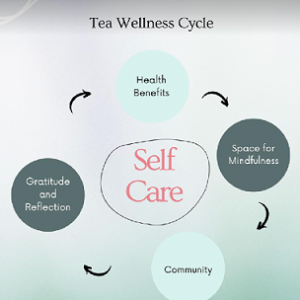A Deadly E. coli Outbreak Hit 15 States, But the FDA Chose Not to Publicize It
In recent years, foodborne illnesses have become a significant concern for public health agencies. The bacteria Escherichia coli (E. coli), which is frequently discovered in tainted food or water, is one of the most well-known pathogens in these outbreaks. While the U.S. The Food and Drug Administration (FDA) and the Centers for Disease Control and Prevention (CDC) are essential in controlling these outbreaks, responding to emergencies, and maintaining the openness of of their actions have often been subjects of scrutiny. A particularly disturbing event occurred when a deadly Fifteen states in the US were impacted by the E. coli outbreak. What made this incident even more alarming was the FDA’s decision not to publicize the outbreak, leaving millions of Americans unaware of the risk. The choice not to share this critical information raised questions about government transparency, public health safety, and whether adequate measures were being taken to protect the population.

Understanding E. coli Outbreaks
The microbe E. coli is frequently seen in both healthy humans and animals in their intestines. Although most are innocuous, some—like E. coli O157:H7, can cause severe illness. Symptoms of an E. coli infection often include diarrhea (which can be bloody), stomach cramps, vomiting, and in some cases, kidney failure or hemolytic uremic syndrome (HUS). The infection is typically transmitted through contaminated food or water, often linked to undercooked beef, unpasteurized milk, and raw vegetables. Outbreaks are more common than many people realize. United States alone, E. coli causes more than 100,000 cases annually. However, most outbreaks are contained and managed quickly with the help of public health agencies. But when larger, more dangerous outbreaks occur, they pose a greater threat to public safety.
The Outbreak Across 15 States
In the case of the 2023 The E. Coli outbreak quickly got out of hand and impacted 15 states.. The strain that caused the outbreak was found to be The most hazardous strain of the bacteria is E. Coli O157:H7.. Within weeks, more than 200 cases of infection were reported, and multiple hospitalizations, some of which were life-threatening, began to emerge.
The outbreak spread through a number of food products, including raw vegetables, contaminated meat, and even packaged salads. Health experts were able to pinpoint the source after tracing the outbreak to a specific food supplier, but by the time the information became available, it was already too late for many individuals who had been exposed to the bacteria.
FDA’s Role and the Lack of Public Disclosure
CDC and other public health agencies are usually at the forefront of controlling and managing outbreaks of foodborne illness. When an outbreak of this magnitude occurs, the FDA plays a crucial role in investigating the source, issuing recall notices, and informing the public of the potential risk. This process typically includes notifying consumers through public warnings, news releases, and social media campaigns. These alerts help individuals avoid the contaminated food and protect their health.
However, in the case of this particular E. coli epidemic, the FDA controversially decided not to make the incident’s specifics public right away.. While the outbreak was acknowledged internally, no public alert was issued for weeks, leaving consumers unaware of the risks they were facing. The delay in public notification was particularly troubling because it allowed the bacteria to spread further, potentially putting more lives at risk.
Many experts and public health advocates were perplexed by the decision. The FDA has a history of acting quickly during foodborne illness outbreaks, and its lack of transparency in this case raised concerns about accountability. It was later revealed that the FDA had been concerned about the potential economic repercussions of publicizing the outbreak, especially considering the wide-reaching impact it could have on the food industry. There was also speculation that the agency feared a backlash from food producers and distributors, which could have resulted in stricter regulations or a loss of public confidence in the safety of the food supply.
The Implications for Public Health
The decision not to publicize a major Public health is seriously impacted by the E. Coli outbreak. In the absence of timely warnings, individuals who may have been exposed to the bacteria have little opportunity to take preventive measures, such as seeking medical attention early, avoiding potentially contaminated foods, or reporting symptoms. More serious cases, longer hospital stays, and in some terrible situations, death, may follow from this.
Moreover, when government agencies fail to provide timely updates, it creates confusion and undermines the public’s trust in the systems designed to protect them. When transparency is lacking, people are less likely to take the necessary precautions, assuming that there is no immediate threat. The CDC and FDA are both tasked with safeguarding public health, and their responsibility extends beyond simply preventing outbreaks; it also includes ensuring that the public has the information they need to protect themselves.
What Went Wrong?
The question arises: why did the FDA decide against issuing a public warning during this outbreak? Several factors could have influenced the agency’s decision: Economic Concerns: One theory is that the FDA was hesitant to issue a warning because of the potential economic consequences for the food industry. Publicizing the outbreak could lead to widespread recalls, a decline in consumer confidence, and significant financial losses for the companies involved. In a time when the food industry is already struggling with supply chain issues and inflation, any additional disruption could have a significant impact.
Coordination Issues: Another possibility is that the FDA faced challenges in coordinating with state health departments, food safety agencies, and the affected companies. In some cases, delays in tracing the source of the outbreak or identifying the contaminated products can result in delays in issuing public warnings. Internal Debate: It is also possible that there was internal debate within the FDA about how best to approach the situation.

For other: Holistic Wellness: Your Guide to a Balanced, Healthier Life, Natural Stress Relief Proven Methods That Work – wellhealthorganically.
Increase Energy Levels Naturally Simple Lifestyle Hacks – wellhealthorganically, Secure Your Rental with Top-Rated Renters Insurance





